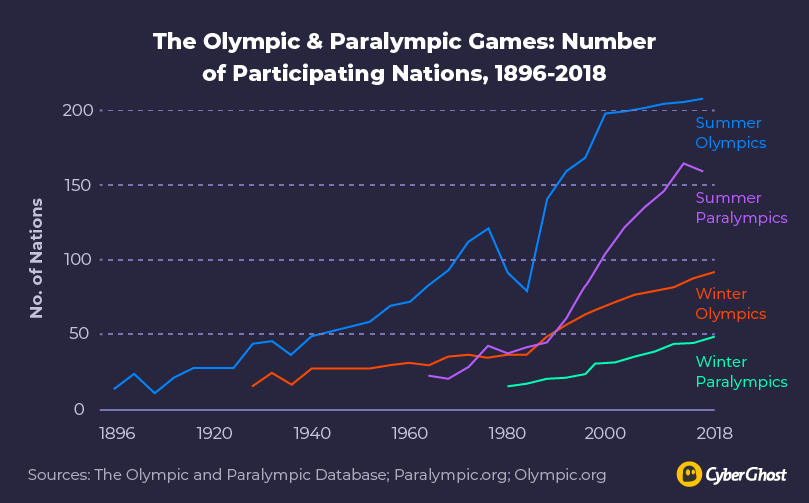When the pandemic rocked college sports in 2020, Stanford administrators announced their shocking decision to eliminate 11 varsity sports.
They eventually rescinded their decision after donors stepped up to the plate…
But this showed first-hand the fragility of Olympic Sports in the United States (and also how reliant the country is on the University system).
Even more fascinating, Stanford alums won 26 medals at the 2020 Summer Olympics — more than any other college for the second consecutive Olympic games.
Today I want to showcase:
- state of Olympic sports
- role of NGB’s, IOC, colleges etc
- where we’re headed in the future
Let’s Dive In 👇
College Runs The Olympics
This is a pretty cool stat…
With 124 medals, current or former NCAA athletes collected more medals than any other country at the 2020 Tokyo Olympics.

This shows the athletic level in college (and the importance of it as a pipeline).
Whether it’s gymnastics, track and field, or swimming — college athletes competed in nearly every sport at the Olympics.
College-related facts about the 2020 Olympic Games:
- About 75% of the U.S. Olympic team competed in college
- More than 100 countries sent college athletes to the Olympics
- More than 1,000 NCAA college athletes participated in the Olympics
- 65 former or current athletes attended USC (University of Southern California). That’s more athletes than 162 countries sent to the Olympic games.
With the 2024 Paris Summer Olympics on the horizon, what does the landscape currently look like?
Current State of Olympic Sports
Over 100 collegiate sports programs have been cut in the last few years — affecting thousands of student-athletes (and potential Olympians).

It’s no secret that football and basketball have long been the cash cows of college athletics.
The revenue generated by these sports sustains entire athletic departments, allowing universities to support less profitable programs.
However, the potential breakaway of football and basketball from the NCAA to form their own governing body threatens to further exacerbate the financial disparities within college sports.
While the move is motivated by a desire for autonomy and greater revenue-sharing, it leaves Olympic sports in a precarious position.
College to Olympic Pipeline
It’s wild how much the United States relies on college sports to train and produce its top talent.
Countries like China and Japan are putting lots of money into niche sports — slowly closing the gap.

What sports will be added to the 2028 Olympics in Los Angeles?
Cricket, lacrosse, baseball/softball?
Keep in mind that the IOC has a limit on the total number of athletes for cost management and has been looking heavily at more mixed-gender sports.
Now that we’ve covered the current state of Olympic Sports, I think it’s important to cover how they actually operate.
Olympic Governance
The International Olympic Committee (IOC) was created in 1894, following the Paris congress to revive the Olympic Games.
Since then, it has overseen the staging of the Olympic Games throughout the world every four years, except during times of global conflict.
- 1896: First Summer Olympics
- 1924: First Winter Olympics
- 2010: First Youth Olympics
This is all in conjunction with other bodies, all of which are stakeholders in a true multi-organizational social system that has become increasingly complex over the Olympiads.

While each circle in the visual above could have its own dedicated article, I want to focus on NGBs (which also has OLYs listed under it, meaning Olympians).
National Governing Bodies (NGBs) are non-profit, non-governmental organizations responsible for promoting and developing a particular sport within a nation.
There are 47 recognized NGBs in the United States — with many more such as “US Cornhole and USA Cricket” who are trying to make the appeal that should they be included in the 2028 Olympics.

NGBs in the US are membership-based organizations set by the Ted Stevens Act and serving grassroots through Olympic-level athletes.
Roughly 15% of NGB’s funding comes from the U.S. Olympic & Paralympic Committee (USOPC) — making them reliant on membership fees, events, fundraising, media rights, and sponsorships.
But what do NGBs do?
- develop Olympians
- create a national team brand
- support youth and elite-level national teams for both genders
- collaborate with the International Federation of the particular sport
- qualify athletes and national teams to participate in international events
Every kid who participates in gymnastics or soccer or baseball or the ski team is almost certainly in a local organization that falls under one of these NGBs.

The keys to success are going younger and younger, while at the same time giving elite athletes a world-class type of training situation.
Most NGBs Are Below-Average
In a recent study, researchers spent two years using publicly available data to look at 36 measures across four categories, including:
- Transparency – how easy it is for the public to get information about an NGB
- Democratic Process – how decisions are made and who makes them
- Checks & Balances – no one official or department has absolute power
- Solidarity – ethics guidelines and support of grassroots sports
The organizations charged with overseeing U.S. Olympic sports from the elite level down to the youth level earned an average score of 58 — a failing grade.
On the upside, U.S. national governing bodies ranked far better than their international counterparts with a median score of 46.3.

And we’re all familiar with the corruption and scandals that have come out of organizations like FIFA — which is charged with preserving the integrity of soccer on a global scale.
Why does this happen…
Money, power, and influence — all of which sports provide — are a major reason for some of the problems.
Where Are We Headed?
It’s a very interesting time for sports in America when you consider what’s happening over the next decade.
- hosting the 2026 FIFA World Cup
- hosting the 2028 Summer Olympics
- likely hosting the 2034 Winter Olympics
At the same time, there’s a potential NCAA breakaway of men’s football (possibly even basketball) due to the new NIL rules — causing a massive rift in the Olympic Sports ecosystem.
But hear me out…
I think Olympic Sports in America actually have the potential to grow stronger without the attachment to football (which isn’t even an Olympic sport itself).
Time shall answer our questions.









